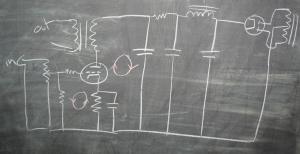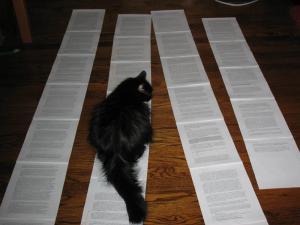-
Posts
4,777 -
Joined
-
Days Won
65
Content Type
Profiles
Forums
Events
Everything posted by dsavitsk
-
I have been thinking about parting with my Melos SHA-1 for a while. It was [url=http://www.stereophile.com/headphones/617/]Corey Greenberg
-
from the datasheet:
-
It would be great if they would sell just the board to non Ayre/Wavelength owners. That, even I would buy. Maybe when one of you guys upgrade, I'll buy the old board off of you ... seriously.
-
These (ESW9's) ended up getting sold off. The sound never really grew on me so they weren't getting used. And, more importantly, they physically hurt my ears after about an hour. Oddly, I can wear my Grados all day (and often do) and they are totally comfortable. Back to the drawing board ...
-
[ame=http://en.wikipedia.org/wiki/Penis_Landscape]Penis Landscape - Wikipedia, the free encyclopedia[/ame]
-
-

DNA (Donald North Audio) Headphone Amp
dsavitsk replied to blubliss's topic in Headphone Amplification
That's the trick, of course and why I say that Donald's amp is a welcome addition to the market even if it isn't how I would do it. I have no idea who sells an amp like I would do it. I think you have to make it yourself. -

DNA (Donald North Audio) Headphone Amp
dsavitsk replied to blubliss's topic in Headphone Amplification
I am always happy to discuss amplifier design in general, but I think the tone here was a little nastier than intended. As I say, Donald and I agree on a lot. I don't even bother to comment on the stuff I don't like at all -

DNA (Donald North Audio) Headphone Amp
dsavitsk replied to blubliss's topic in Headphone Amplification
By the way, while I will say that I disagree with just about every assertion that Donald makes in his post above (regarding bias; caps; OPT specs, manufacturers, and core material; damping; whether OPT design is a black art; optimal tube load; etc.), my interest is not in derailing Donald's sales. As noted, I do things very differently. However, this doesn't mean I think what he does is wrong, and we still probably agree more than we disagree. I like transformer coupled amps, and I am glad to see that they are becoming available. Even with my complaints, it is still topologically a step up from the SP and RSA amps of the world (and it's easy enough to mod ). So, I said my peace, and I will keep further discussions of this issue offline. -

DNA (Donald North Audio) Headphone Amp
dsavitsk replied to blubliss's topic in Headphone Amplification
I don't believe in complexity, other than where it is necessary. So, no, these changes would not greatly increase complexity. In fact, one of them would reduce cost by a couple of dollars. To be sure we are on the same page, my guess as to the schematic is attached. Donald can chime in if I am wrong about something (oh, and there should be a resistor in series with the output I believe -- he said that a few posts back.) The two circles represent the simplified signal current path. The primary sin here is that the input and output signals both pass through electrolytic capacitors. My experience is that the soft "tubey" sound of many tube amps is, in large part, actually the sound of the capacitors which impart their sound on the amp more than any other part. At the very least these should be film caps. But, even better is finding other solutions to the issue. A first solution is to use some other method of bias. This can be an LED, a battery, or any number of options (see bias options here). Which ever the choice, almost all of them are better than the old resistor + cap. The second issue is the power supply. Aside from the big cap in the signal path, this is a high Z supply that will sag with signal. Sag is great in a guitar amp, but not so great for hifi. A simple linear regulator will both quiet the supply and eliminate the sag. This sort of supply can literally be as simple as a single chip and a few resistors. The linear regulator still has a big cap on the output, but there are ways around that, too. Indeed, one solution is a shunt regulator. Using a CCS load for it, you can have a low Z low noise supply, and this can eliminate the cap from the signal path as well as the CCS presents a high Z barrier. I did something like that here with a glow tube. Note that mine also obtains fixed bias with a resistor by running all the current, but none of the signal, though the biasing resistor. The third issue is that I just don't think Edcor OPTs are all that great. I think they are fine for bread boards, but for a production amp, I'd expect something better. Something better costs more, and maybe that is the issue here, but if this is a budget amp then market it as such, not as an amp "with unprecedented fidelity and emotional involvement". Finally, for low Z headphones, better bass is obtained with a better damping factor. The earlier stated parameters for this amp either require that the load on the tube is too low, or that the Z out is too high. -
Just as an opposite data point, our vet said essentially the opposite, that she has seen issues with years of pills but that the radiation is pretty benign. I have no idea what the right answer is, of course. But, as I say, our kitty takes her pills so well that it is not an issue yet. For those that don't, a slight chance of kidney issues down the road seems like a reasonable risk. Here she is proofreading something for me.
-
Another option is Radiocat - Centers For The Treatment Of Feline Hyperthyroidism I have a hyperthyroid cat who takes her pills just fine, but this is supposed to work really well. It isn't free, of course, but considering the alternative it isn't really that expensive either.
-
The kitty above is Bolivia. She's about 9 and came to us about a year ago from the Tree House Humane Society which is a cageless no-kill cat shelter in Chicago. She had been rescued from a hoarder in southern Illinois about 2 years ago. If you like cats and are in Chicago and are interested in seeing a 3 story house with 300 cats roaming around, go to the Tree House. It's an experience. Below is Mani. We lost him about a year and a half ago from large cell lymphoma. He topped out at about 20 pounds and could stretch to nearly 4 feet long. He loved us, but did not like anyone else -- he would lay with his belly up just waiting to bite anyone who thought it might be soft and pet-able. His vet needed two people with leather gloves to hold him down.
-
However, it is clear that both builders did terrible jobs ... My sense, there isn't enough polish on this earth to shine up this turd. And I don't buy for a second that there is something special to the SP sound. It is poorly designed, poorly built, and inherently dangerous. I think you gut the amp, come up with a circuit that utilizes the case as best as possible, and build (or hire someone to build) something new. Short of that, if the amp portion is OK, at least build an all new PS.
-
[ame=http://en.wikipedia.org/wiki/Tarantula_hawk]Tarantula hawk - Wikipedia, the free encyclopedia[/ame] "the sting, particularly of Pepsis formosa, is among the most painful of any insect. Commenting on his own experience, one researcher described the pain as "
-
I'll add a little clarification to Ryan's post. His amp is a Moth 2A3/45 with a 6J5 driver (the 6J5 being 1/2 of a 6SN7). The driver is direct coupled to the output tube meaning that the voltage on the plate of the driver sets the grid bias for the output tube. This isn't necessarilly my favorite topology (every design has trade offs, but some of the trade offs in this direct coupled design are ones I wouldn't necessarilly make), but rather than tear it all up we decided to try to get as much out of it as possible. As Ryan said, most of the work was on the drivers. On Ryan's, the drivers were biased at ~-3.5V and ran at ~4mA which put the plates at about 115V. The current seemed low to me as I think the 6J5 needs a bit more current to sound its best, and rp drops a bunch with just a few more mA. But, increasing the current changes the plate voltage which changes the output tube bias which all has to be accounted for. So, we also lowered the bias on the driver. By lowering this to 1.8V and increasing the current to ~7mA, we got the plate at about the same spot. Also, 1.8V is conveniently the voltage dropped by a red LED which we used for bias replacing the resistor and cap which is a good thing. The LED provides more or less fixed bias, very low impedance, and lower distortion than a standard capacitor. We also used a CCS to set the current. For a parts outlay of about $15, these two changes effectively get 2 (electrolytic) capacitors out of the signal path and increase how linearly the tube performs. The downside is that since the bias on the driver is lower, it probably can't drive the output tube to full output, but this is hardly an issue with headphones. For now, we added some bypasses to the output tube's cathode bypass caps. We are talking about maybe changing to ultrapaths at some point, or something else, but it is a weak part of the amp. There are also a few other modifications such as snubbers to the filament supplies, etc.
-
Am I the only one to whom this is new? Parts Connexion
-
Look at that -- it's hard to tell just how much voltage it needs across it at 250mA, but it looks promising. I am, for now, just using LM317 based CCSes (this is for the L'espressivo 3 filament supply). I had a trimmer in there for adjusting current, but the heat was causing the resistance to change, and they were turning themselves off after about 20 minutes of use. The build is such that adjusting them while on was problematic. I tried this circuit diyAudio Forums but it ended up not working at all, or rather, not working as expected -- which I am still a bit confused about. Colin thinks, I think, that the transistor cannot drive the mosfet properly as the circuit simmed properly. I replaced the trimmers in the originals (LM317 based) with some fixed resistors and all seems OK now -- but a better CCS would certainly be a good thing.
-
Me either. I made up those boards and then got swamped with work. The intention has been to use it as a driver with a phase splitting choke for a PP amp. I have the tubes, the OPTs, the chokes, and just about everything else necessary for the project except for the time to do it. Maybe this summer ... For those who have not seen it (it isn't linked from my site for some reason), the D3a project is an experimental breadboard for experimenting with lots of different circuits. Details are at ecp.cc
-
I'm late to my own party More marketing than reality. A CCS, if it's any good, should not add any "transistory" colorations, but instead just keeps the power supply caps out of the signal loop, thus removing "capacitory" colorations which are far worse offenders. The IXYS parts are the 10M45 and the 10M90 for higher voltage. The DN2540 is a Supertex part. They are essentially the same, though the biasing resistor values will differ.
-
Now that this thread is thoroughly off topic ... do you have any thoughts on where to get a quad, or even a pair, of unmatched LU1014D's? I am looking for a decent high current low dropout CCS to use for a filament supply. None of the depletion mode mosfets that I can find are high enough current (I need ~250mA), and everything else I have tried has either not worked, or worked poorly for one reason or another.
-
I appreciate the offer. I probably have enough close matches, but if I don't, I'll take you up on it.
-
DC offset. Depending upon the OPT used, the offset between sides has to be really small. For instance, I am working on the version below as an IV to a differential NOS AD1865N DAC. Talking with K&K, offset between sides needs to be in the less than 1mV range, with lower being better. I went through 100 2sk170's, and while I found reasonably match parts, I am still going to need trimmers to be able to make adjustments to get things in that range making choke loading impractical. In fact, I may need to pick up more fets to find better matches. With the Cinemag on the headphone driver, offset issues are slightly relaxed, but not really by much -- it is still a fully interleaved 80% nickel core. More than a few microamps of current will still saturate it. However, barring the offset issue, I wonder if dual chokes on the same core might work for both sides ... By the way, the topology is in use here: http://www.diyaudio.com/forums/showthread.php?s=&threadid=141865 TDA1543's, cheap OPT's (Cinemags that cost $18) and it sounds great -- one of my favorite things I've built.
-
I'm sure it would work great, but I hate hunting down obscure solid state parts. Someone should try it, though. So far, my experiments with the topology have been really promising.




